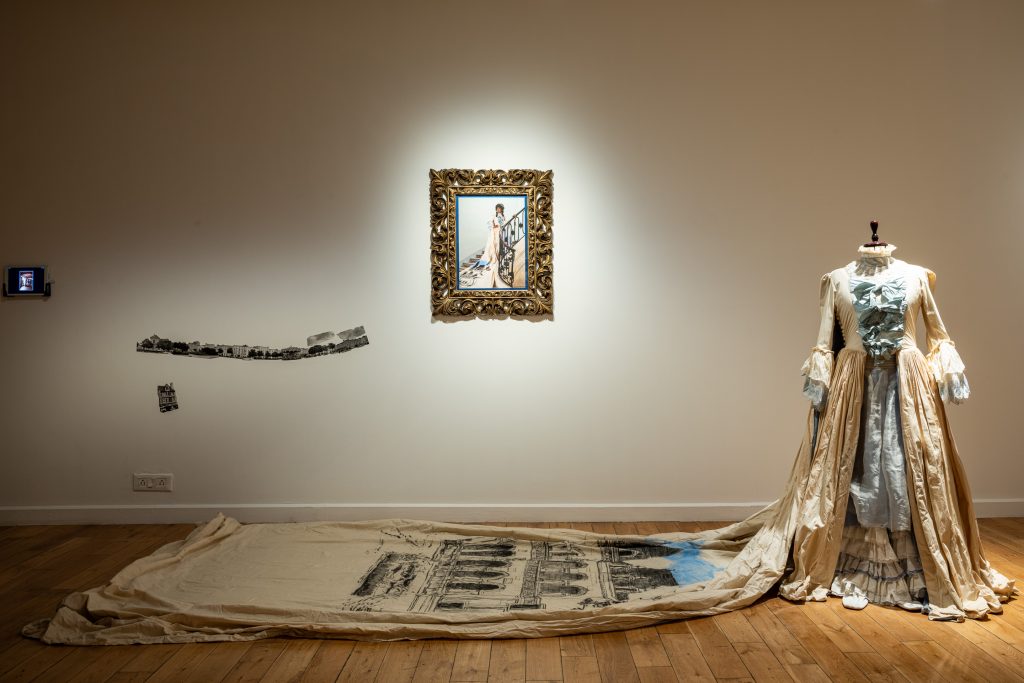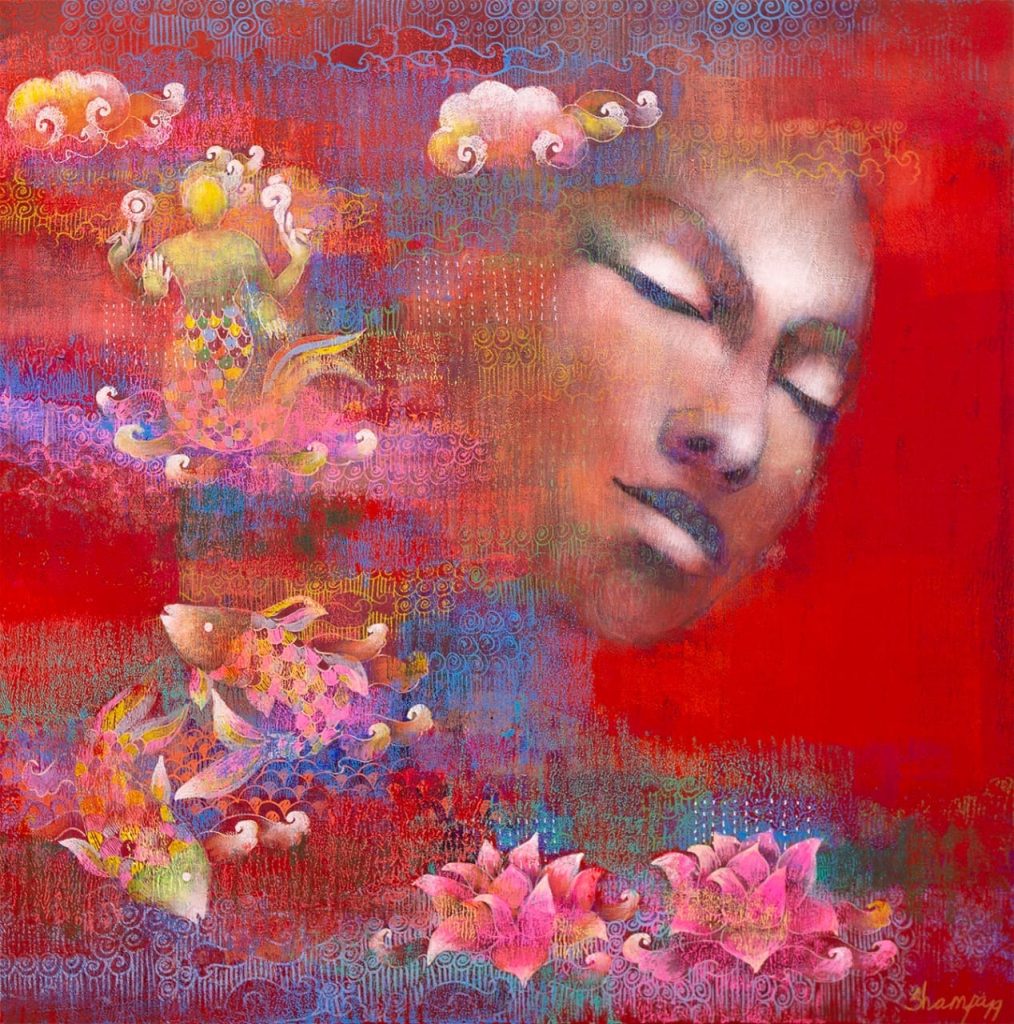Kiran Nadar Museum of Art, Noida presents ‘Mirror/Maze: Echoes of Song, Space, and Spectre’ in the Noida space. With an overwhelming reception from viewers in Saket, New Delhi the life of the exhibition is being extended and expanded with the inclusion of additional works. Bringing together works of 24 artists from KNMA’s diverse collection the exhibition opened to the public on January 25 2024 and the display at KNMA, Noida is extended till 10 July 2024.
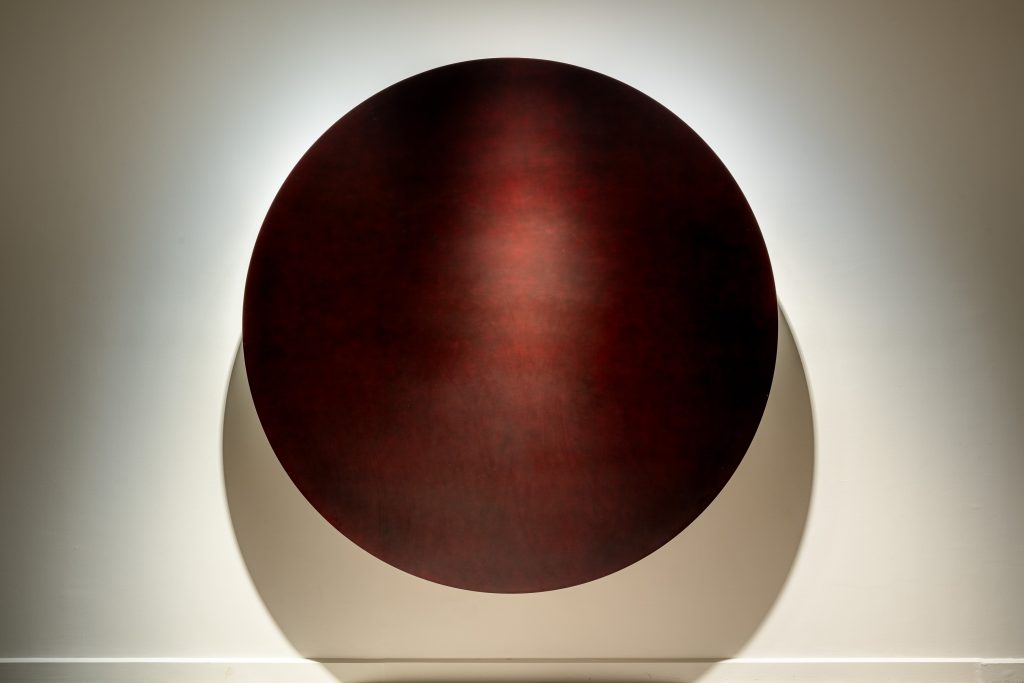
Courtesy – KNMA
The artists’ self-willed journeys draw us into the unique and strange worlds they create through ‘affect states’ of sound and silence, meditation and labour, stillness and action, emptiness and fullness. By disrupting the sense of space/place, destabilising the notion of a fixed image, and accelerating and slowing down the experience of time, they raise our consciousness towards the complexities encountered in our experience of every day along with the lingering fear of the unknown.
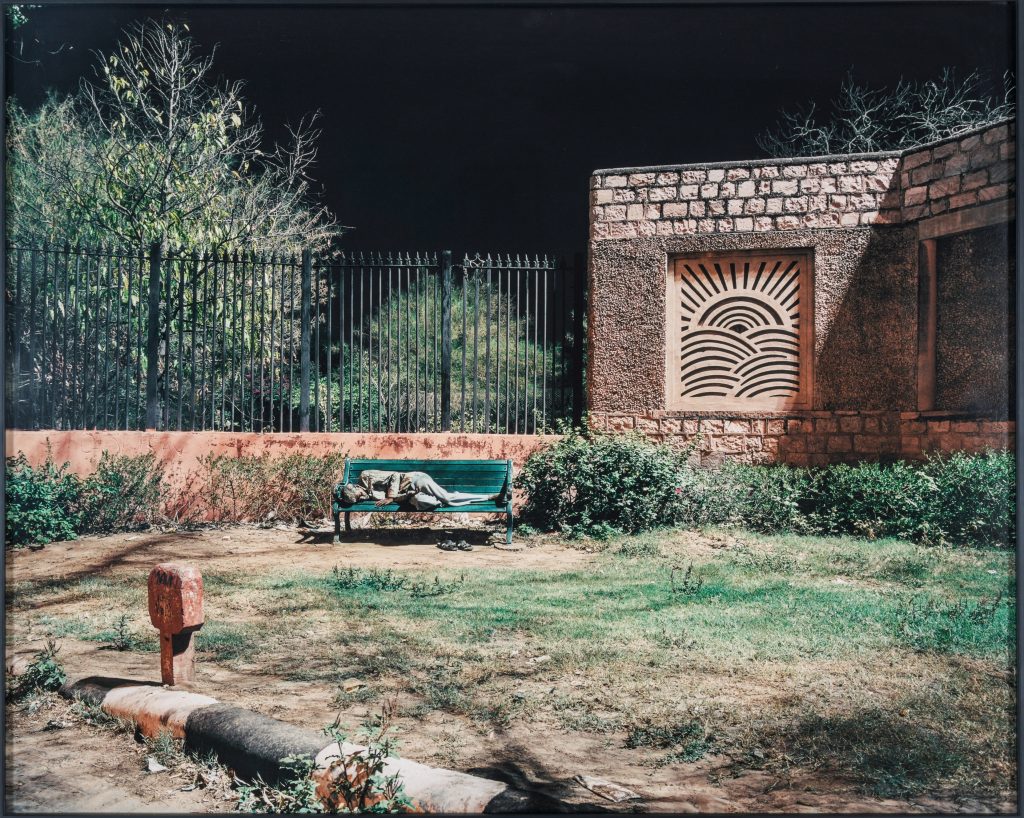
Courtesy – KNMA
The exhibition has been curated by Roobina Karode (Director and Chief Curator, KNMA) with Avijna Bhattacharya, Debashree Banerjee, Madhurima Chaudhuri and Agastaya Thapa, the exhibition allows the viewers to engage with a wide spectrum of artistic experiences, from drawing, paintings and sculptures to digital presences, Computer Generated Imagery (CGI), generative Artificial Intelligence (AI) and computer coded hyperrealities.
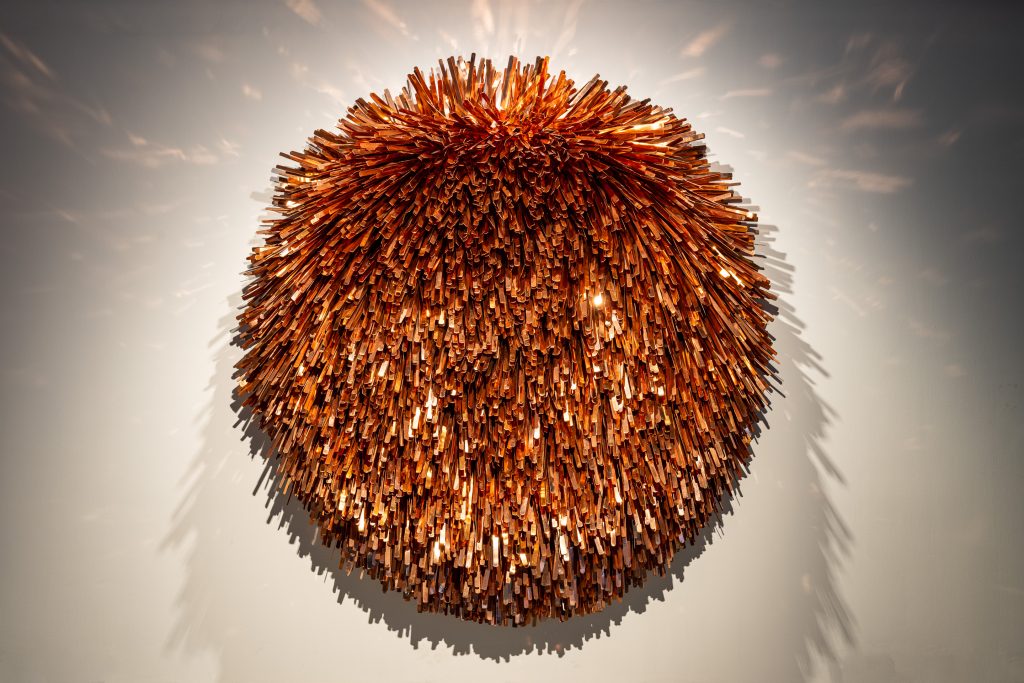
Courtesy – KNMA
Roobina Karode mentions, “Experiential in nature, the exhibition deliberates the form of a space-maze with long corridors opening into juxtaposed, dark and illuminated areas of artistic play with different materials, memory, images and afterlife of performance-based art. One encounters the meticulousness of their craft and enchantment with technology, but most importantly, their creative energies that translate into enduring acts of resilience, quiescence and reflection, and of intimate experiences, alluding to the precariousness of life and our sense of being.”
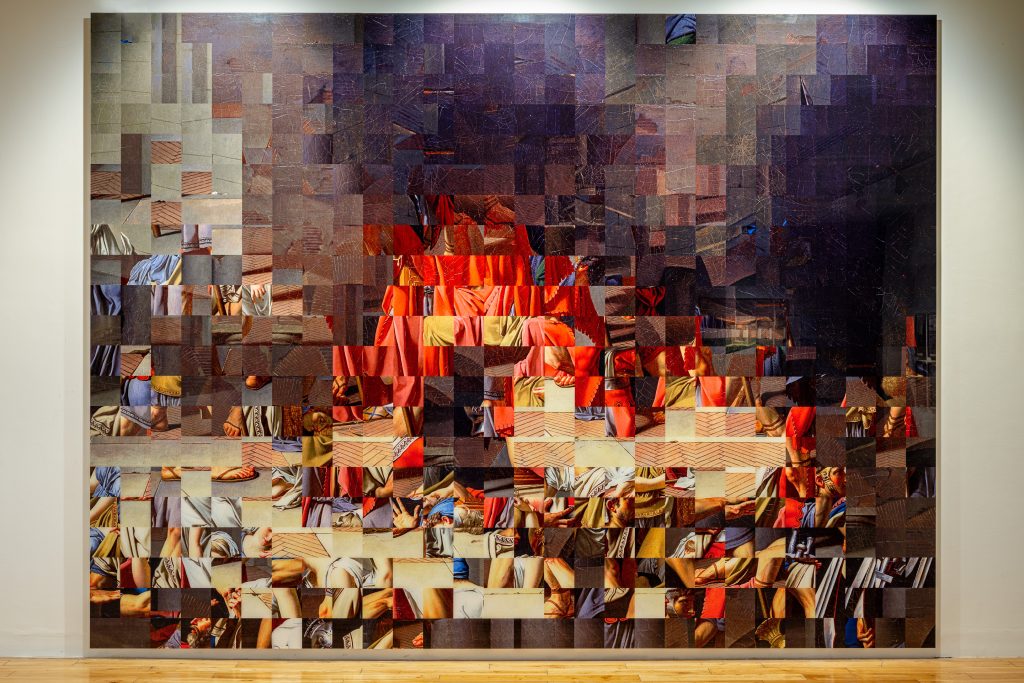
Courtesy – KNMA
The nebulous ground of the exhibition draws viewers into the moving narrative around an enduring but difficult relationship (Dayanita Singh and Mona), a life of self-imposed exile and utopian desire (Raqib Shaw), re-purposing of utensils of daily use into an object of meditation (Subodh Gupta) and a relentless search for the resurrection of our lost rhythms with nature (Jayashree Chakravarty). Ranbir Kaleka’s ‘Long Sleep of a Storyteller’ (2012-2022) evokes a surrealist dystopia, reflecting an experiential image of the artist’s inner world.
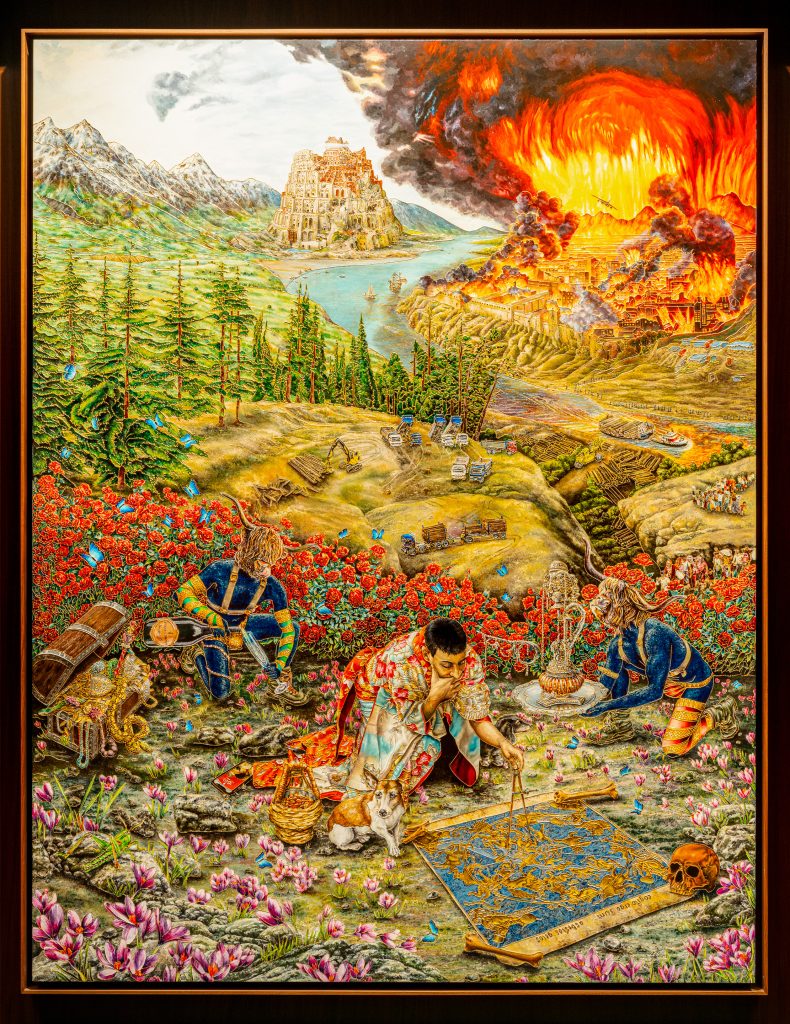
Courtesy – KNMA
Sonia Khurana’s double channel video ‘Somnambulist’s Song’ (2008) is a rumination on the opposing experiences of sound and silence. Anish Kapoor’s huge mysterious disk titled ‘Mirror (Red no.2 mix to Black Mist)’ (2019) confounds the idea of space and object, and the experience of the aural and the ocular. Rashid Rana’s installation ‘Desperately Seeking Paradise’ (2010-2011) disrupts the idea of a fixed reality through the creation of an optical illusion, a maze out of a familiar city skyline image. Arun Dev’s meticulously painted enigmatic doorways and psychedelic architecture take us to mysterious spaces, perhaps, of an alternate world. Gauri Gill’s evocative ‘Re memory’ (2003-ongoing), a series of 54 black-and-white photographs captures unregistered presences, and overlooked details of mundane and urban spaces, delicately outlining a poetics of space.
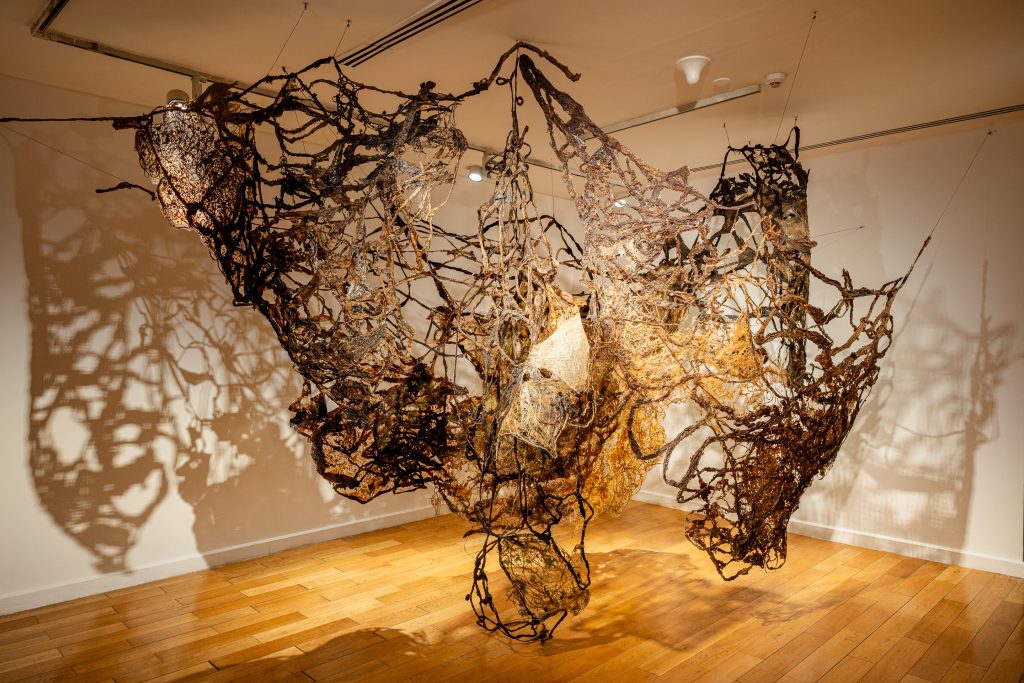
Courtesy – KNMA
Dhruv Malhotra’s colour pigment print series ‘Sleepers, After Dark Trilogy’ (2007-2013) draws our attention to the silent underbelly of the city at night devoid of its clamouring noise, traffic, people and the surrounding chaos. It draws our attention to poignant images of sleepers/ sleeping figures on benches in public spaces such as parks, under the flyover, deserted after-party places and monuments. Nikhil Chopra’s ‘Broken White’ (2010) presents the afterlife of his performance in Paris in 2010 as inscribed in the memory site constructed with its accessories, drawings, and photographs within the exhibition space, thus adding another layer to the performance. Martha Fiennes’ extraordinary film ‘Yugen’ (2018), a combined effort of the artist’s creativity working in sync with the computer coder’s actions, creates constantly evolving labyrinths which take viewers through the surreality of time and space to a world that can only be experienced in the realm of art.
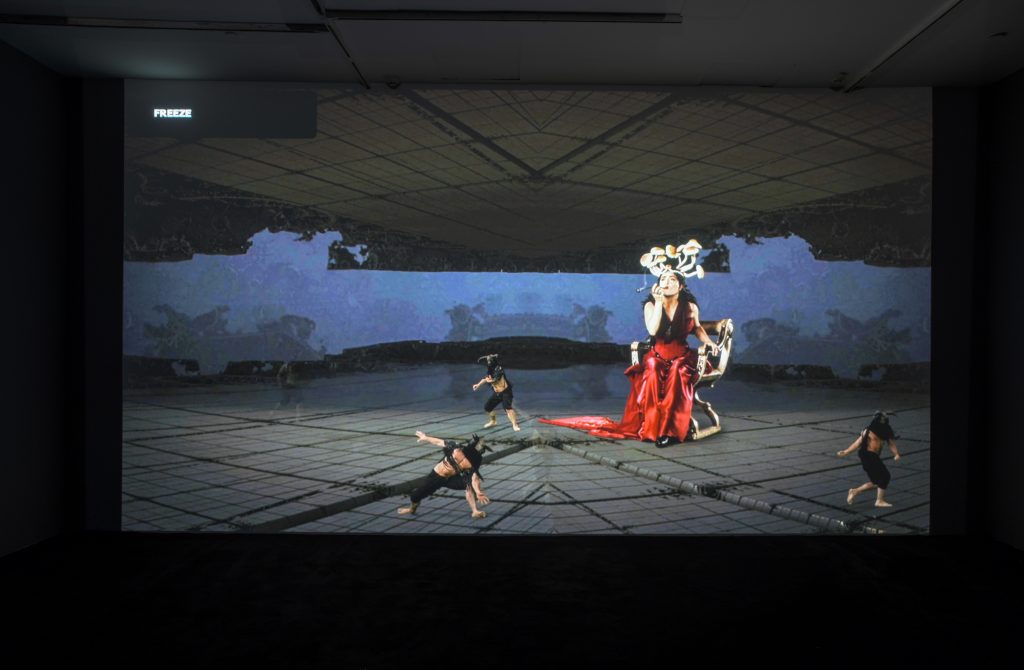
Courtesy – KNMA
Sheba Chhachhi’s multi-part installation ‘Winged Pilgrims: A Chronicle from Asia’ (2006-2007) is a work that has evolved out of years of research. It transmutes itself into an assembly of visual images that slowly ushers in the viewer to a quiet ambience facilitating meditation on pressing worldly issues such as migration, displacement, the impact of globalisation and the unresolved friction between tradition and modernity. Nataraj Sharma’s massive works tread on similar themes as he draws the viewers’ attention to the rapidly changing urban context of progress-driven stripping and denudation of landscape. Also, deploying his favoured strategy of the grid and repetition he prompts an exploration into how perceptions are formed vis-à-vis the visible mode. Rohini Devasher’s ‘Terrasphere’ (2015), demand steady mindfulness to observe subtle changes occurring in the image field or the cosmos of the earth. Jayashree Chakravarty‘s hand-made suspended form titled ‘Nest’ (2022-2023), created out of organic material such as jute rope, coconut fibre, dried leaves, and seeds and stained with coffee and tea resonates with the interiors of the body or a mind maze, echoing simultaneously the instinctive play of line and mass in nature.
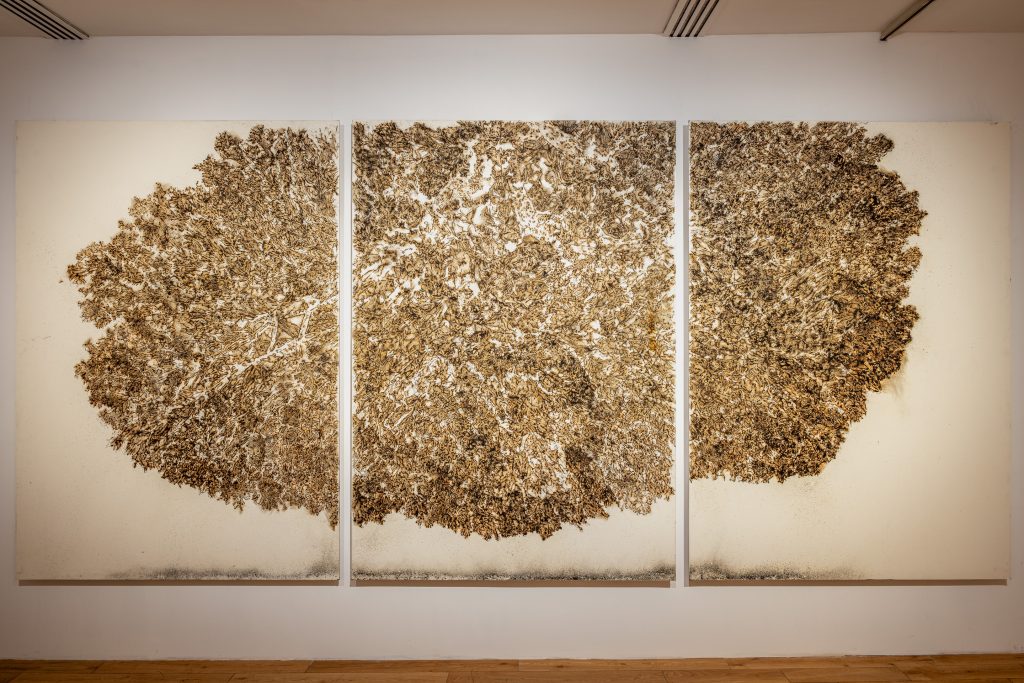
Courtesy – KNMA
Some works allude to spectres and apparitions, to human mortality and pain. Neha Choksi’s ‘Iceboat’ (2012) is a performative and philosophical reflection on the condition of precarity of existence. Ruminations on the ritual aspects of death and transitional states of being is presented by Sudarshan Shetty in his video work ‘Juggler’ (2012). Bikash Bhattacharya’s motif of the ‘doll’ standing, hanging or abandoned in the deserted city of Calcutta, in the wake of war and violence takes us into an eerie setting of a street or a dead-end wall. Marina Abramović’s film ‘Seven Deaths of Maria Callas’ (2020-2021) a performative adaptation of iconic operatic characters played by Maria Callas such as Desdemona from Shakespeare’s Othello or Georges Bizet’s Carmen, is a moving rendition of the interwoven fate of women. Using her body as the medium of her art and expression, Abramović is recognised not only for the intensity of her performance-based practice but also for her grit and risk-taking approach while testing the limits of her mind and body to transcend fear and mortality.
About Kiran Nadar Museum of Art
Kiran Nadar Museum of Art (KNMA) opened its doors to the public in January 2010. It is a pioneering private museum of Modern and Contemporary art in South Asia, with two spaces located in New Delhi and Noida. It is a not-for-profit institution with an extensive and creative engagement with exhibition-making, educational and public-focused programs, and publications. The museum houses a growing collection of more than 10,000 artworks from South Asia, with a focus on the historical trajectories of 20th-century Indian art, alongside the experimental practices of young contemporaries.
Image: ‘Broken White‘ (2010) Courtesy – KNMA
KNMA presents The Legacy Series: An Evening of Performance Celebrating The Gandharva Mahavidyalaya


